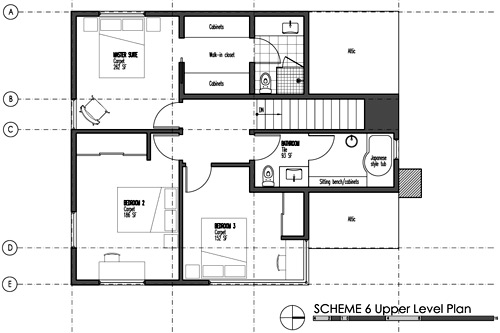
A current project of ours involves the substantial remodel to an older house in Seattle’s Queen Anne neighborhood. It’s a quaint little house but, despite the fact that it’s been remodeled a number of times over the years, it doesn’t work. Like many homes from this era, the biggest obstacle of creating a functional home is the roof line; and gable roofs don’t allow for adequate living space on the second floor. Gable roofs make for cramped spaces with awkward little rooms that you can’t stand up straight in. The shortage of windows always makes for dark cave-like interiors and the closets always seem to be at waist level. They just don’t work.


It’s a situation that we encounter often enough with remodels that we’ve come up with a handful of architectural strategies. Here’s our top 10 hit-list of important tips for a second story remodel for gable roof homes:
1. Stick to the footprint of the existing house –the foundation and first floor framing is already there and in most cases can support a second floor. The example above looks at 3 different second floor remodel options that all work on the same existing footprint.
2. Dormers aren’t enough –they still don’t offer the attributes of building out the second floor.
3. Keep the stair opening where it is –in most cases the entire first floor (and possibly the basement) is organized around the stair location –changing the location can get expensive quickly. The stair direction can always be mirrored cost-effectively if it improves the circulation -but keep it in the same location.
4. Use a flat roof or shed roof –this provides formal head-height inside and allows the new floor area to use the full footprint of the existing home. In the example below, the new second floor supports 3 full bedrooms and 2 bathrooms.
5. Go modern –remodeling a home to this degree takes on a different philosophy of design. It involves modern materials and methods; it creates modern living spaces inside. Subsequently we think it’s important to acknowledge this change of philosophy in the aesthetics. A house should look like what it’s doing.
6. At least two windows in each room on different walls –there should be enough new wall space to allow for natural daylight from different directions in each room, which makes for higher quality spaces inside.
7. Line up the new windows with the existing first floor windows –this provides a great amount of natural light upstairs and maintains an intentional geometry at the exterior.
8. It’s not all or nothing –remodeling the second floor doesn’t necessitate that the entire roof be demolished and replaced. In the example above we kept nearly half of the existing roof to keep the scale of the house tidy and save a bit on costs.
9. Install a more durable roof –most of the existing homes we look at have composite shingles; they wear out quickly, weather badly and require maintenance. The remodel is a great time to install a standing seam metal roof which goes with the modern aesthetic and is extremely durable.
10. Enhance the first floor -there are typically cost-effective opportunities to enhance the existing first floor while remodeling the second floor. In the case below we’re using an open riser stairway to create some nice design and give the first floor an open feel.

That’s just 10 items, there are many more. We think that these older gable-roof houses are good models and with a little help from modernism they can be great residences for another 50+ years.
Cheers from team BUILD





